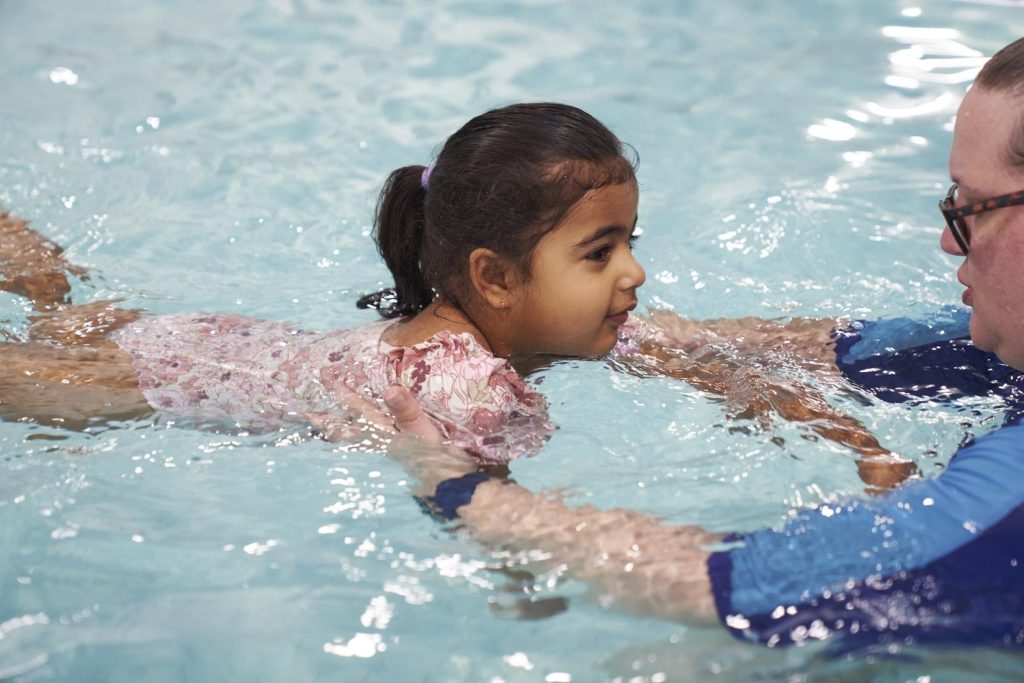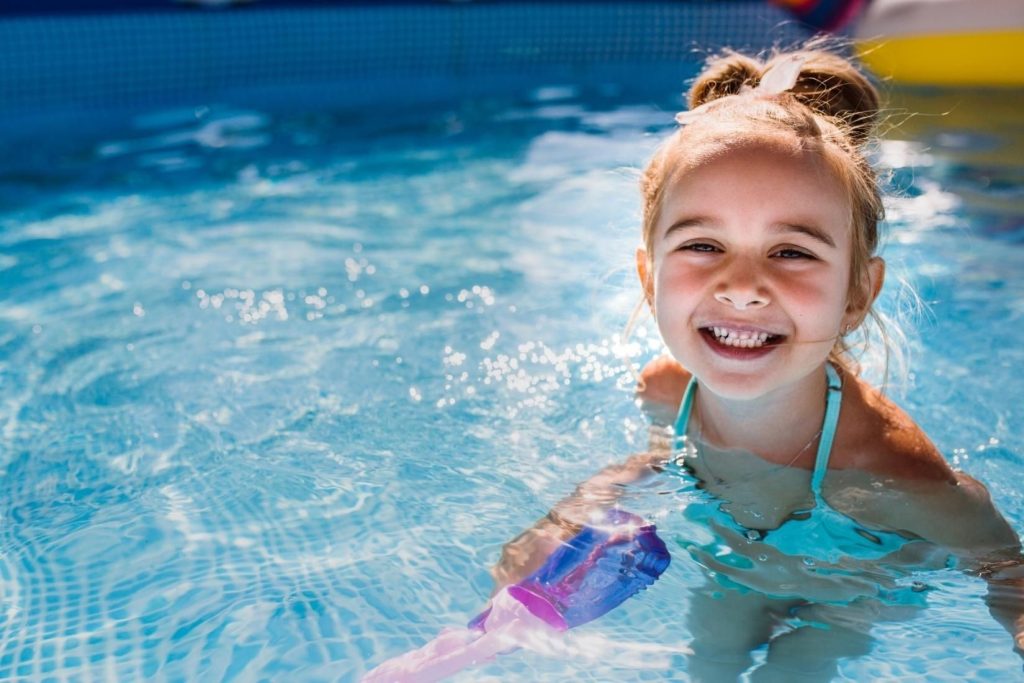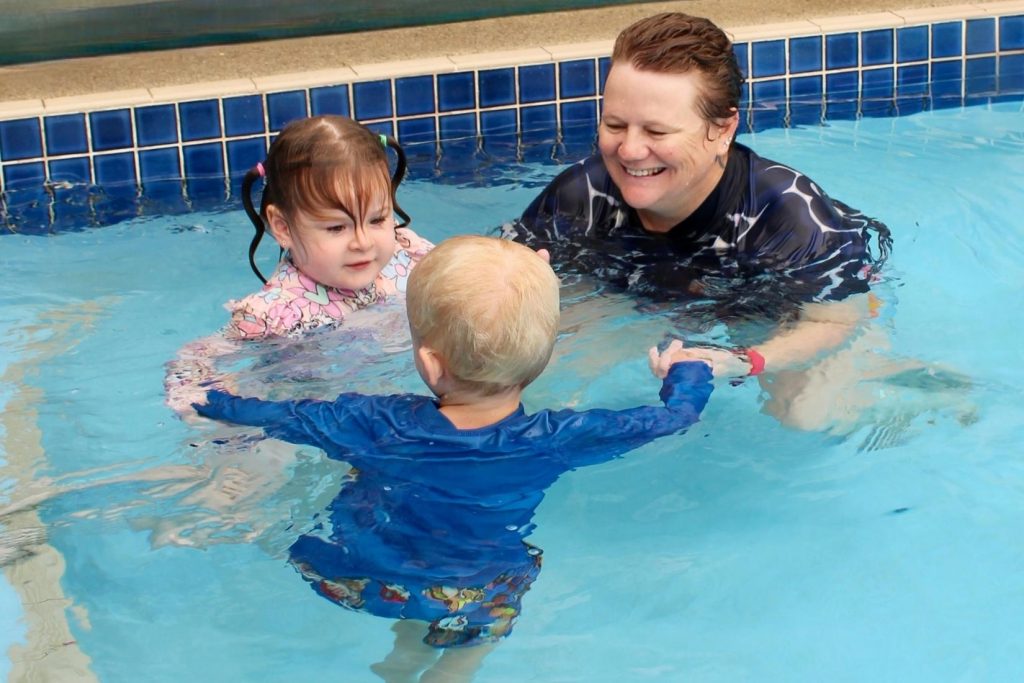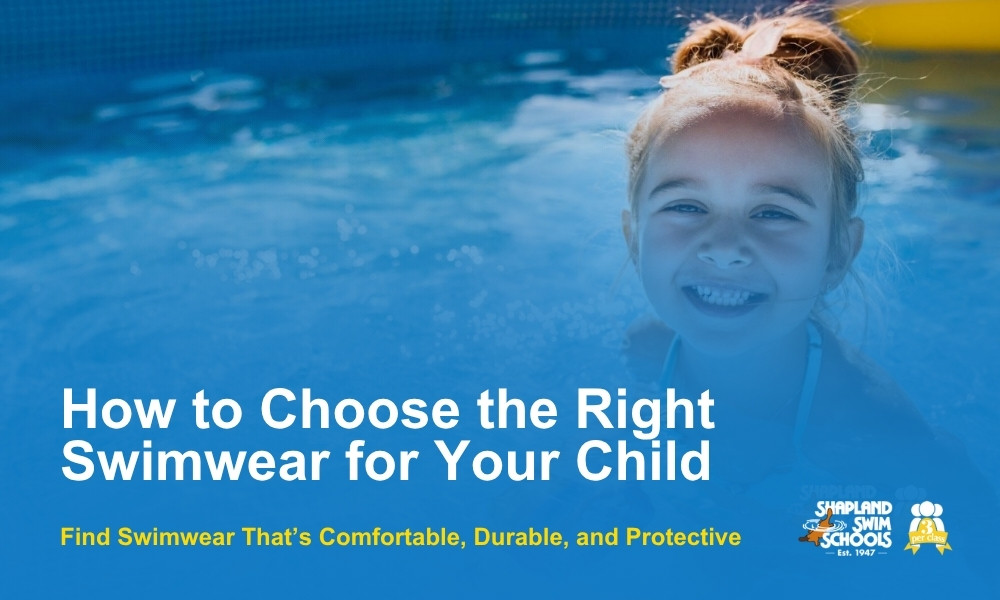Buying the right swimwear for your child is about more than just adorable prints. You must balance style with comfort, safety, and function as a parent. The right swimsuit can protect your child’s delicate skin, provide them freedom of movement, and last through frequent pool sessions.
In this guide, Shapland Swim School explores essential factors to consider when choosing your child’s swimwear to ensure your child feels safe, confident, and happy when swimming.
How to Choose Swimwear for Your Child?
After decades of teaching children to swim, we’ve seen firsthand how the right swimwear can transform a lesson. The right material, fit, and design don’t just make your child look ready for the pool – they help your child feel safe, supported, and confident from the very first splash.
Below are our expert recommendations to help you choose swimwear that truly supports your child’s learning and comfort in the water.
Choose Soft, Breathable Fabrics
Fabric choice matters because babies have delicate and sensitive skin prone to irritation. You should choose swimwear made from soft, breathable, and stretchy materials like nylon-spandex blends or polyester with a smooth finish. These fabrics are quick-drying, comfortable, and flexible, ensuring your child stays comfortable during playtime.

Pick a Proper Fit
Too tight outfits may cause chafing, while overly loose ones risk slipping off or creating drag in the water. Therefore, always choose a well-fitting swimsuit that hugs your child’s body gently without feeling restrictive. When in doubt, check a reliable size chart to ensure you choose the right swimsuit size for your child.
Ensure Ease of Use
Convenience is key for your child during swimming lessons or child-friendly pool moments. Choose designs that are easy to put on and take off, especially when handling wet clothing. Styles with front zippers, adjustable straps, and snap buttons make changing less stressful and keep your child comfortable.
Look for Comfort-First Features
Look for features that keep your child comfortable. Opt for flat seams to prevent skin irritation, padded linings for added softness, and built-in swim diapers for convenience. These little details help ensure your child can enjoy swimming without discomfort.

Prioritise Sun Protection Features
Sun protection is essential when swimming outdoors. Choose swimwear with an ultraviolet protection factor (UPF) rating 50+ to protect your child from the sun’s harmful rays. The fabric should also be tightly woven to block UV rays effectively. Moreover, long-sleeve rash guards and full-coverage swimsuits offer additional protection, keeping your child’s skin safe in direct sunlight.
Look for Durable Materials
A swimsuit’s durability is important if your child attends warm water classes or swims frequently in chlorinated pools. Opt for chlorine-resistant swimwear that won’t easily fade or stretch out. High-quality materials extend the swimsuit’s lifespan, making it more economical for active families.
What Type of Swimsuit Is Best for a Child?
A long-sleeve one-piece swimsuit is often the best choice. It offers full coverage for delicate skin and excellent sun protection. This style balances practicality and safety, making it ideal for indoor child-friendly pool games and outdoor swimming.
Child Swimsuit Size Chart
To find the right swimsuit size, always compare your child’s measurements against this reliable swimwear size chart before purchasing.
| Age | Waist(side to side) | Length(top to bottom) | Hip(side to side) | Leg opening(side to side) |
| 6-12 months | 23 cm | 17 cm | 24.5 cm | 12.5 cm |
| 1 year | 24 cm | 18.5 cm | 25.5 cm | 13 cm |
| 2 years | 25 cm | 20 cm | 26.5 cm | 13.5 cm |
| 3 years | 26 cm | 21.5 cm | 27.5 cm | 14 cm |
What is the Best Colour for a Child’s Swimming Suit?
Bright, high-contrast colours like neon orange, yellow, or hot pink are the best for children’s swimwear. These shades stand out clearly in pools and open water, making it easier for parents, instructors, and lifeguards to spot a child quickly.
What Colours Should Child Swimsuits Avoid?
Avoid choosing swimsuits in light or dark blues, grays, greens, and whites. These colours can blend into the pool water or the natural environment, making a child harder to see. Similarly, camouflage patterns reduce visibility, increasing the risk of delayed emergency response.

Which Child Swimsuits Are Safe for Sensitive Skin?
If your child has sensitive skin, select swimwear made from soft, breathable, and hypoallergenic fabrics. Avoid options containing harsh dyes, synthetic irritants, or chemicals. Certified organic cotton blends or high-quality polyester-spandex fabrics with smooth finishes are ideal for babies with delicate skin.
Why Choose Shapland Swim School?
Thorough preparation ensures your child feels comfortable, confident, and eager to learn during swimming lessons. At Shapland Swim School, we have a unique approach to building essential swimming skills for all children. Our small class size of three students allows every child to receive personalised attention from our certified instructors.This close attention ensures your child learns in a supportive and friendly environment. We also work closely with parents in choosing baby swimwear and creating a learning speed that suits every child. Enrol your little one in our lessons today and watch them unlock their full swimming potential.

